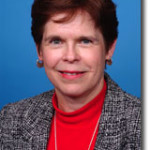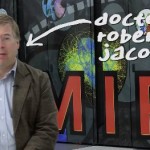Allinea reports that students at IIT Madras are debugging and profiling parallel code in record time, using the company’s DDT and MAP tools.
Archives for October 2013
French DataScale Project to Develop Synergies between Big Data and HPC
The French DataScale project is moving forward with its mission to develop synergies between big data and HPC. Started in June, the DataScale project has already gathered a large set of partners, from large research laboratories to SMEs.
The Way Forward to Extreme Scaling in CAE Applications
Greg Clifford writes that we are seeing major scaling improvements in CAE codes, across all simulation fields. However, since most CAE simulations currently use less than 250 cores, there is still much work to do in a world where machines with 10,000 cores are commonplace.
Interview: Cherri Pancake on the 25th Anniversary of the SC Conference
SC13 will mark the 25th anniversary of the Supercomputing conference. In the first of a series of insider interviews, we caught up with Cherri Pancake from Oregon State University to get her take on how far the show has come over the years. You may remember Cherri as the Conference Chair at SC’99. She is currently a member of the SC Steering Committee.
Call for Participation: First Annual PRACE Scientific and Industrial Conference 2014
PRACE has issued their Call for Participation for the first annual Scientific and Industrial Conference. The event will take place in Barcelona May 20-22, 2014.
Met Office Supercomputer Maps Storm Long Before it Forms
A £30million computer used by the UK Met Office in the UK was able to accurately predict the size and path of a recent storm four days before it had taken shape.
Job of the Week: Domain Specialist at South Dakota State University
South Dakota State University is seeking an HPC Domain Specialist in our Job of the Week.
Simulating the Earth’s Core with the Cray XE6 Monte Rosa
Researchers at ETH Zurich and the University of Leeds are using supercomputers to learn why the Earth’s magnetic field moves gradually westward.
Mellanox Expands MetroX Long-Haul Solutions
MetroX is the perfect cost-effective, low power, easily managed solution that enables today’s data centers to run over local and distributed RDMA InfiniBand and Ethernet fabrics, with management under a single unified network infrastructure,” said Gilad Shainer, vice president of marketing at Mellanox.
Video: How Supercomputers Enable Climate Science
Dr. Robert Jacob describes how he uses the Mira supercomputer and high-powered visualization tools to study the earth’s climate system. This is a great little video for explaining “Why Supercomputing?” to your kids or just about anyone else, for that matter.






